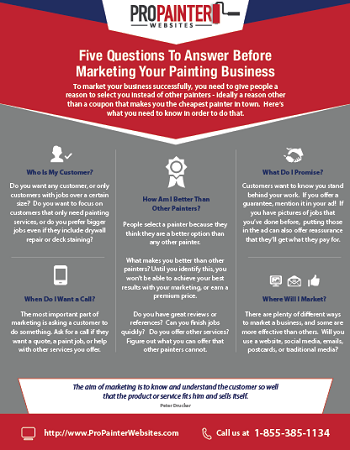Check Out The Effect Of Seasonal Components On The Efficiency Of Commercial External Painting And Determine The Optimal Times To Achieve Enduring Results For Your Task
Check Out The Effect Of Seasonal Components On The Efficiency Of Commercial External Painting And Determine The Optimal Times To Achieve Enduring Results For Your Task
Blog Article
Short Article Author-Doherty Rodriquez
When you're planning a commercial exterior painting project, seasonal aspects can make or break your results. You'll want to consider exactly how temperature level and humidity impact paint application and drying times. Choosing the appropriate period can ensure your paint adheres effectively and lasts longer. But which seasons are really the very best for this type of job? Allow's explore the crucial elements that can affect your project's success.
The Impact of Temperature Level on Paint Application
When you're preparing a commercial exterior paint project, the temperature level can substantially affect how well the paint adheres and dries.
Ideally, you want to repaint when temperature levels vary in between 50 ° F and 85 ° F. If it's as well cool, the paint may not heal properly, leading to concerns like peeling off or fracturing.
On the other side, if it's also hot, the paint can dry out too promptly, avoiding appropriate bond and leading to an unequal finish.
You must additionally think about the moment of day; early morning or late afternoon offers cooler temperature levels, which can be a lot more beneficial.
Constantly check the supplier's suggestions for the specific paint you're utilizing, as they commonly provide assistance on the excellent temperature array for ideal outcomes.
Moisture and Its Impact on Drying Times
Temperature isn't the only ecological variable that influences your industrial external paint job; humidity plays a significant role too. High humidity degrees can slow down drying times substantially, influencing the general high quality of your paint work.
When the air is saturated with moisture, the paint takes longer to cure, which can bring about concerns like poor attachment and a higher danger of mildew growth. If you're painting on an especially humid day, be planned for extensive wait times between layers.
It's essential to keep an eye on local weather and plan accordingly. Preferably, aim for humidity levels between 40% and 70% for optimum drying.
Maintaining these consider mind ensures your task stays on track and delivers an enduring coating.
Best Seasons for Commercial Exterior Painting Projects
What's the best time of year for your industrial external painting jobs?
Spring and early autumn are generally your best choices. During these periods, temperature levels are mild, and humidity levels are commonly reduced, creating suitable problems for paint application and drying.
Stay clear of summertime's intense heat, which can create paint to completely dry too quickly, bring about inadequate bond and coating. Likewise, wintertime's cold temperature levels can prevent correct drying out and healing, risking the long life of your paint job.
Aim for days with temperatures between 50 ° F and 85 ° F for ideal results. Bear in mind to check the local weather report for rainfall, as wet conditions can destroy your job.
Planning around paint companies tulsa ensures your painting project runs smoothly and lasts much longer.
Final thought
In conclusion, preparing your business external paint tasks around seasonal considerations can make a substantial distinction in the result. By scheduling job throughout the excellent temperatures and moisture levels, you'll make certain far better adhesion and drying times. Keep in mind to keep an eye on regional weather forecasts and pick the right time of year-- springtime and very early loss are your best options. Taking these steps will assist you attain a resilient and specialist surface that lasts.
